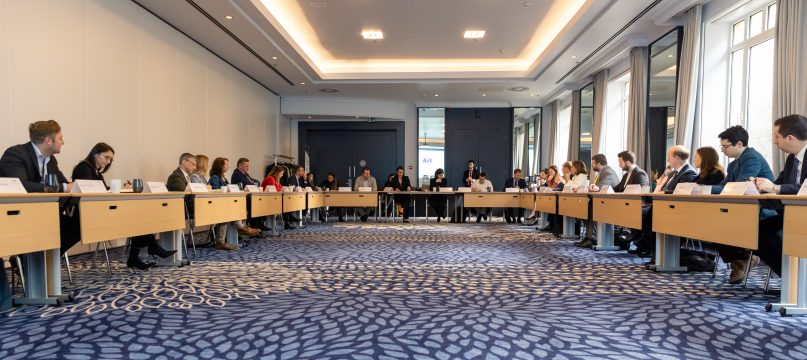
On 16 March, the FIA European Bureau organised an event on decarbonisation in road transport, which was kindly hosted by MEP Barbara Thaler, and gathered members of the European Parliament, representatives of the European Commission, and key stakeholders from the mobility sector. The key question throughout the event was how to achieve climate neutrality by 2050 whilst keeping mobility affordable and convenient for all.
Inge Mayeres, from Transport and Mobility Leuven, presented the study commissioned by the FIA EB on the inclusion of road transport in the EU Emissions Trading System (ETS), which findings show that the best option would be the integration of road transport in the current ETS, combined with a gradual decrease of existing fuel taxation. Indeed, this alternative would be more affordable for consumers, and more efficient in reducing greenhouse gas emissions than creating a separate ETS for road transport and buildings as proposed by the Commission.
The FIA EB supports climate neutrality ambitions and truly believes that road transport can and must contribute to the green transition. Laurianne Krid, FIA Region I Director General, presented the FIA EB’s positions on energy taxation, CO2 standards, electromobility and alternative liquid and gaseous fuels, and stressed three main aspects: affordability, consumer acceptance, and technological neutrality.
A more general discussion of the “Fit for 55” Package then took place among Alexandre Paquot (DG CLIMA), Kai Tullius (DG MOVE) and speakers representing stakeholders, such as ACEA, T&E, IRU, and CLEPA.
Participants showed support and commitment towards achieving the EU’s climate neutrality goals; however, and although participants agreed that electromobility will play an essential role in decarbonising road transport, several bottlenecks were identified concerning renewable energy availability, deployment of charging infrastructure, sourcing of raw materials, long-distance journeys, and more. Therefore, the need to consider efficient alternatives to electromobility was raised.
Despite its complexity, most participants agreed with the FIA EB that a Life Cycle Assessment (LCA) approach to calculating vehicle emissions would be the best way to accurately measure decarbonization of road transport.
Going forward, a plea was made by the participants for the integrity and consistency of the various proposals composing the Fit for 55 Package to be preserved, to avoid unintended consequences and ensure maximal efficiency.
The FIA EB will continue following the debates and negotiations around the Fit for 55 Package, with the aim of contributing to climate neutrality, and preserving affordability and the social benefits of mobility for all.
Contact
Diogo Pinto
Policy Director
dpinto@fia.com